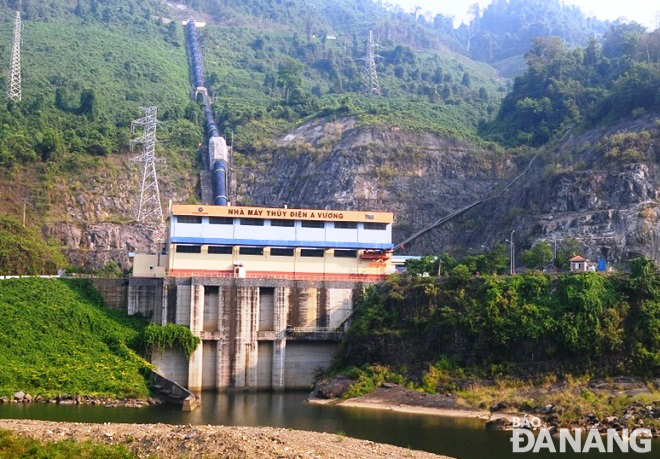Hydroelectric plant discharges water to push salinity out of Cau Do River
In recent days, the A Vuong Hydroelectric JSC has had water discharged from its reservoir at an average daily capacity of 34 - 37m3/s, much higher than the normal limit of 12m3/s in order to push the salinity out of the Cau Do and Vinh Dien rivers to ensure enough water supplies for locals’ daily lives and production activities along the downstream areas of the Vu Gia and Thu Bon rivers.
 |
| The A Vuong hydroelectric reservoir has discharged water at a daily capacity of 34 - 37m3/s into the downstream areas of the Vu Gia and Thu Bon rivers. |
According to Mr Ho Minh Nam, the Deputy General Director of Da Nang Water Supply JSC, several days ago, the salinity level of the Cau Do (Red Bridge) River increased significantly, and even reached 1,000mg/l, 4 times higher than the allowed limits. Now, the saline instruction level drop to 500 - 600mg /l, thanks to an amount of water discharged from the A Vuong hydropower plant.
The municipal Department of Natural Resources and Environment reported, the remaining water source stored in the A Vuong and Dak Mi 4 reservoirs is now still sufficient for discharge in line with the national government-approved inter-reservoir operating procedures at the Vu Gia - Thu Bon river basin.
However, in the face of the prolonged scorching weather which lingers into the coming days, the water level in these reservoirs is expected to fall below the dead storage as the hydroelectric plants continue their electricity generation to ensure power supply to the national grid, and poor water flows into hydropower reservoirs. This matter will result in a hike in the salinity level in the rivers.
It is reported that, with the current capacity of about 40 million m3 of water, the Vuong hydropower reservoir can releases water down into the downstream sections from now until after 31 August, but cannot maintain the discharge until 15 September.